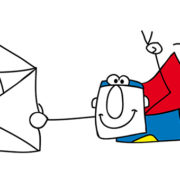Senior Living Lead Generation: 4 Tips for Better Outcomes
Many of our clients come to us because they need help with senior living lead generation. Our initial work usually involves resetting expectations with marketing and sales teams regarding what good lead generation even is.
To that end, we’ve taken the best of this expectations-setting exercise and compiled everything into the tips below.
Tip #1 for better senior living lead generation tip: Make it personal.
Keep in mind that personalization goes beyond simply using a person’s first name in email subject lines (although that is a smart strategy).
When we say “personalization,” we mean providing content that is relevant to a specific person. This means you need to know the person—their hopes, their pain points, their questions. And then you need to provide helpful content that matches those hopes, solves their problems, and answers those questions.
The good news? If you take the time to develop buyer personas, you’ve done most of the heavy lifting since most prospects visiting your site will fall into one of your personas. Good marketing automation can take it from there by serving up the right content to the right person at the right time.
By the way, if you don’t think personalization is important for your senior living lead generation efforts, think again:
- The majority of U.S. consumers (90%) consider marketing personalization very or somewhat appealing. [Source: Martech Alliance]
- Marketers using advanced personalization (such as real-time data) can see up to a $20 return on every $1. [Source: ClickZ]
- Personalization can deliver 5 to 8 times the ROI on marketing spend and lift sales by 10% or more. [Source: Harvard Business Review]
Tip #2 for better senior living lead generation: Don’t expect everyone to be the same.
This goes along with our previous point about buyer personas, but we’re taking it a step further. Even if you have your personas figured out, you need to keep in mind that not everyone is ready to buy now. Some leads will be interested in moving into a senior living community right away while others might be looking six months, twelve months, or even two years out.
That’s why you need to think of prospects as either sales-qualified leads (SQLs) or marketing-qualified leads (MQLs). Your sales team should work the SQLs. Your marketing automation, on the other hand, will deliver personalized content to the MQLs—content that will nurture MQLs until they’re ready to shift to SQL status.
Bottom line: If you treat all leads the same, you’ll end up wasting time and valuable dollars.
Tip #3 for better senior living lead generation: More doesn’t always mean better.
Honestly, this tip should be good news. Because the point of inbound marketing isn’t to simply bring in more traffic, the goal is to bring in more targeted traffic. Oftentimes, after implementing inbound marketing best practices, your overall website traffic might go down. But the number of quality leads will go up. That’s the metric that matters.
Attracting more quality leads goes back to the point we made in the first tip: Start by knowing your target persona and what they’re searching for in Google. Then, create compelling content based on those searches. This will help lead ideal prospects to your site via organic search (and pay-per-click advertising as well).
Then (provided you have good marketing automation in place), you can automatically score and segment your senior living leads according to whether they’re SQLs or MQLs. SQLs will go onto the sales team. And MQLs will continue to be nurtured.
Tip #4 for better senior living lead generation: Don’t put all your dollars into third-party lead aggregators.
Third-party lead aggregators are problematic for many reasons. First issue? Third-party leads are shared leads. Second, the overall lead quality tends to be low. Third, being the first person to interact with a third-party lead is the only way to improve conversions with these leads—and that’s a lot harder than it sounds. And finally, you likely already have many of these leads in your database already. Which means you’re essentially paying for them twice.
A better approach is to put your marketing budget towards the following:
- Using effective marketing automation software to segment and nurture the leads.
- Optimizing your website for search.
- Creating compelling content for a variety of personas at different stages.
- Creating effective lead nurturing campaigns to help drive people to the content.
Again, focusing on organic lead gen will likely result in fewer overall leads than a third-party lead generator would deliver. But the quality will be much higher, and the leads will be 100% yours.
Bonus tip for better senior living lead generation: Work with us!
We love showing senior living sales and marketing teams how to attract better leads that actually convert into move-ins. Get in touch so we can chat about your needs. Or check out our case studies.




